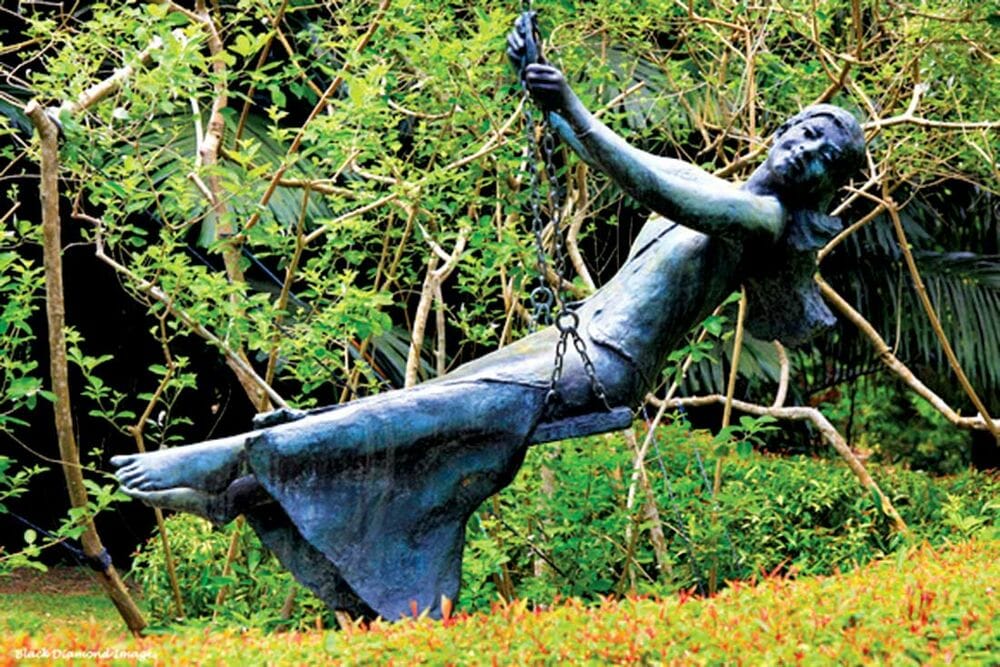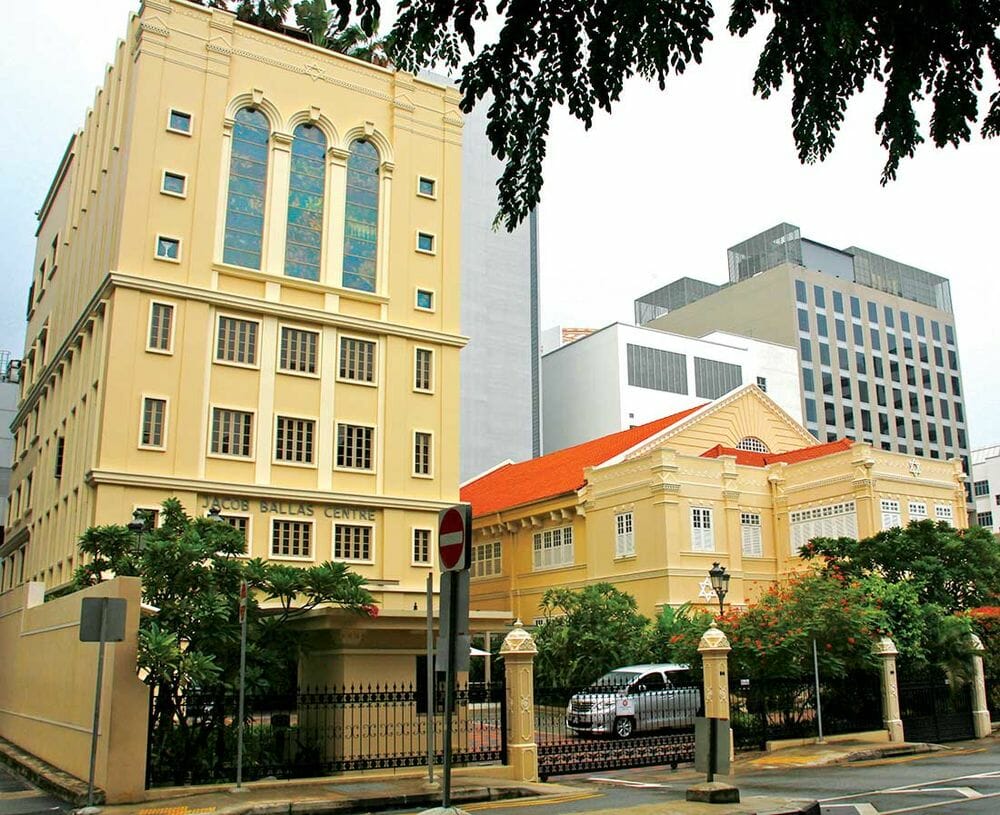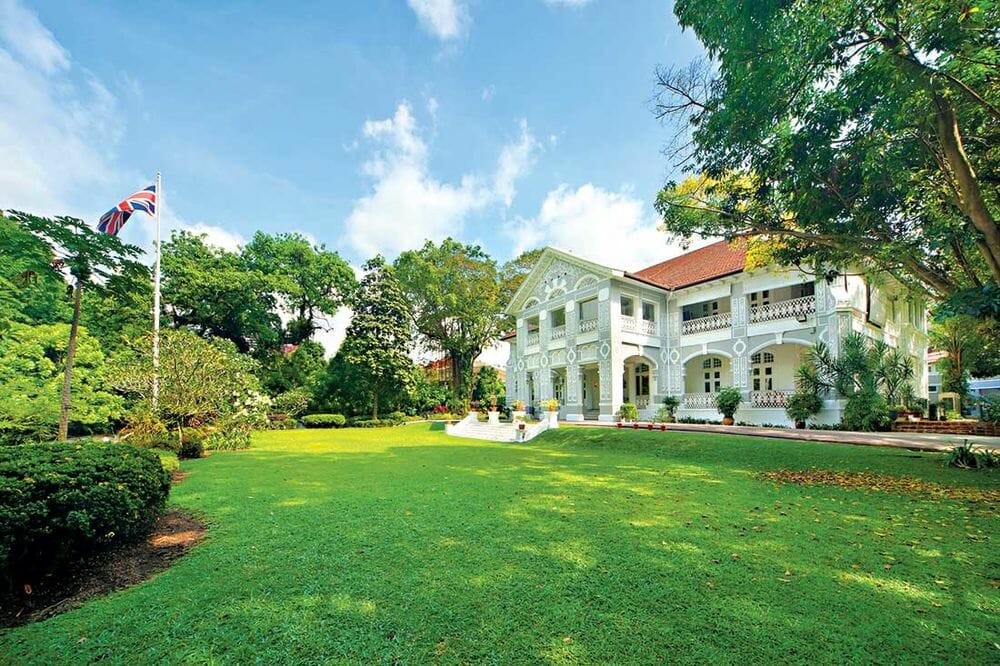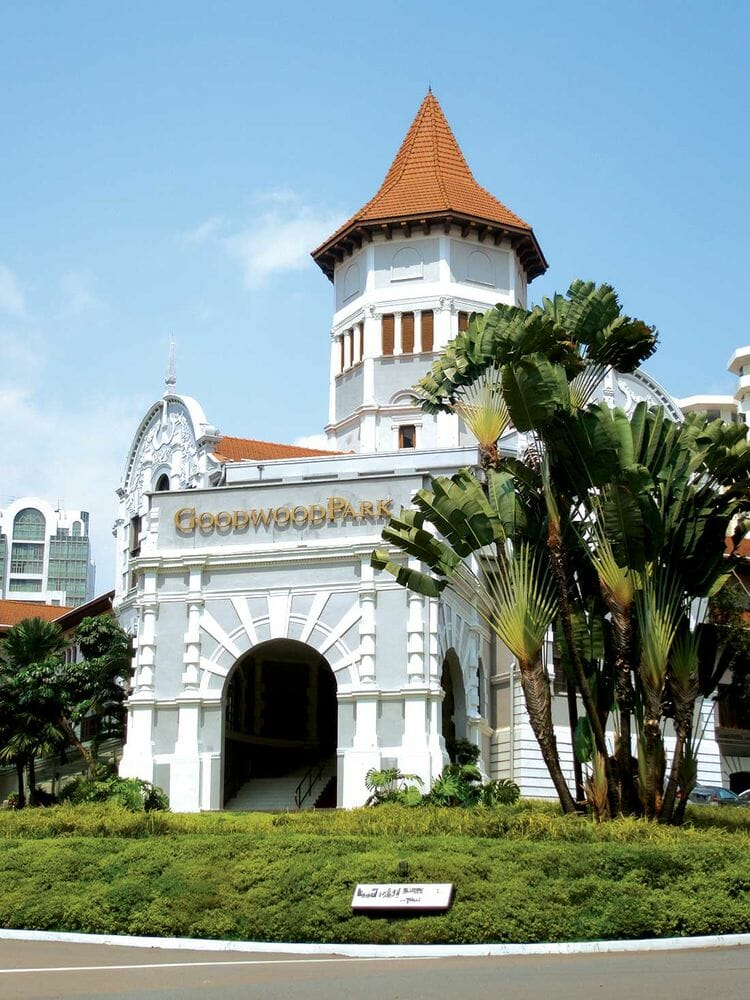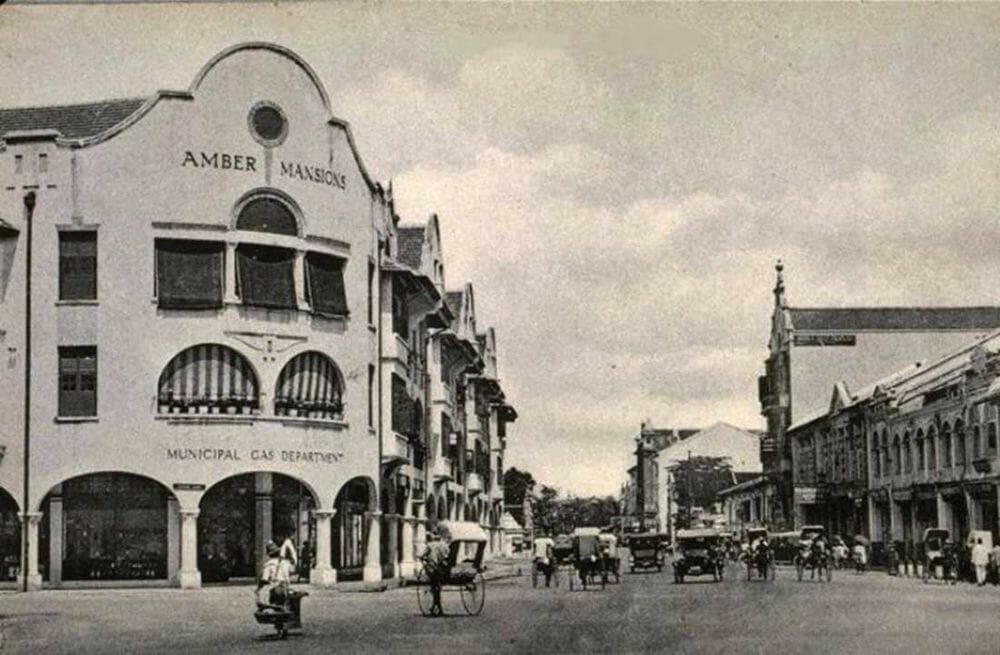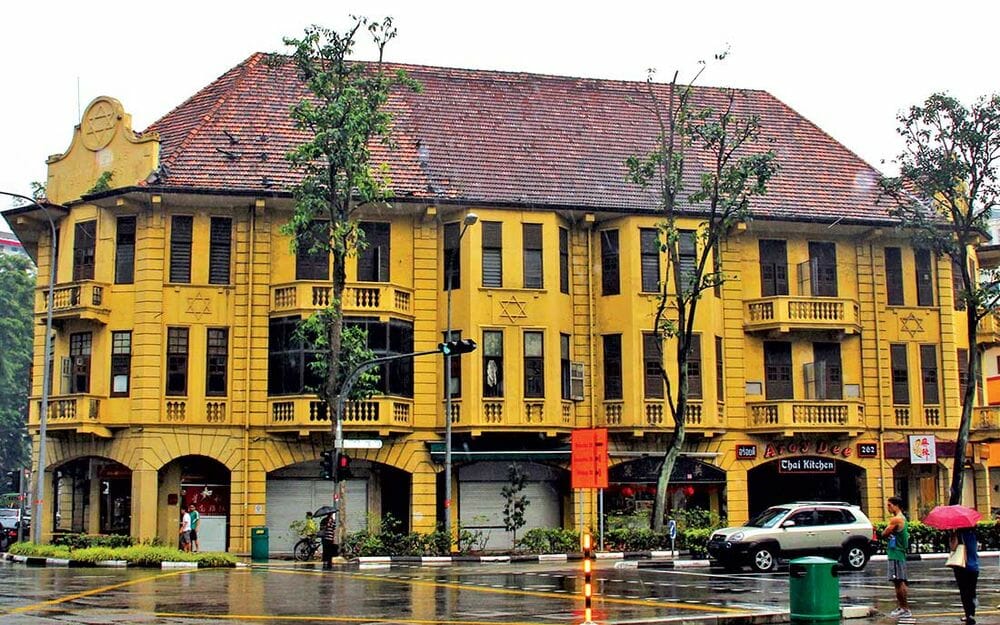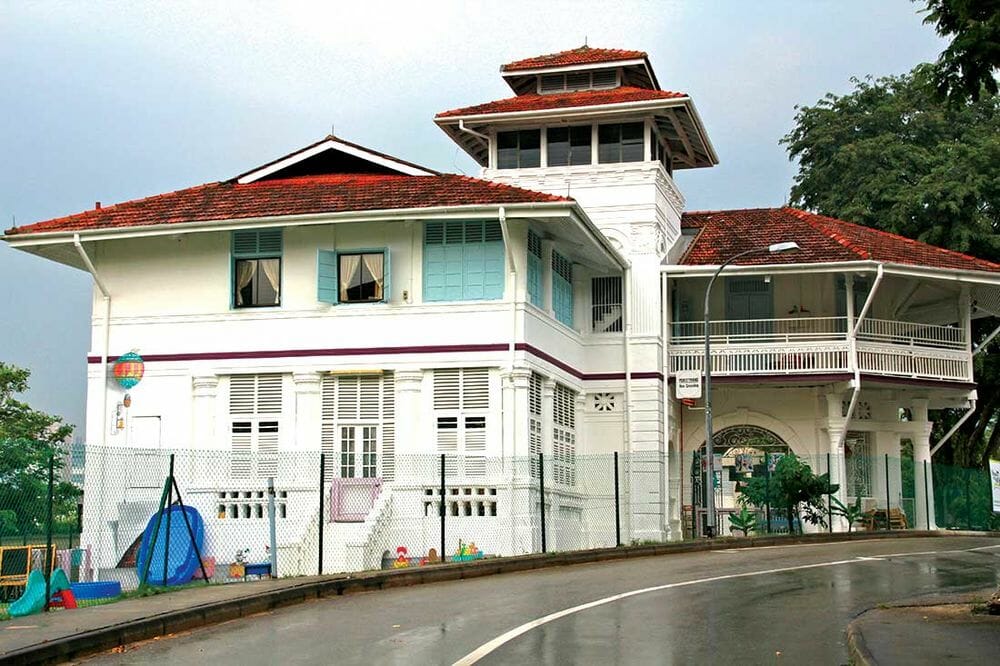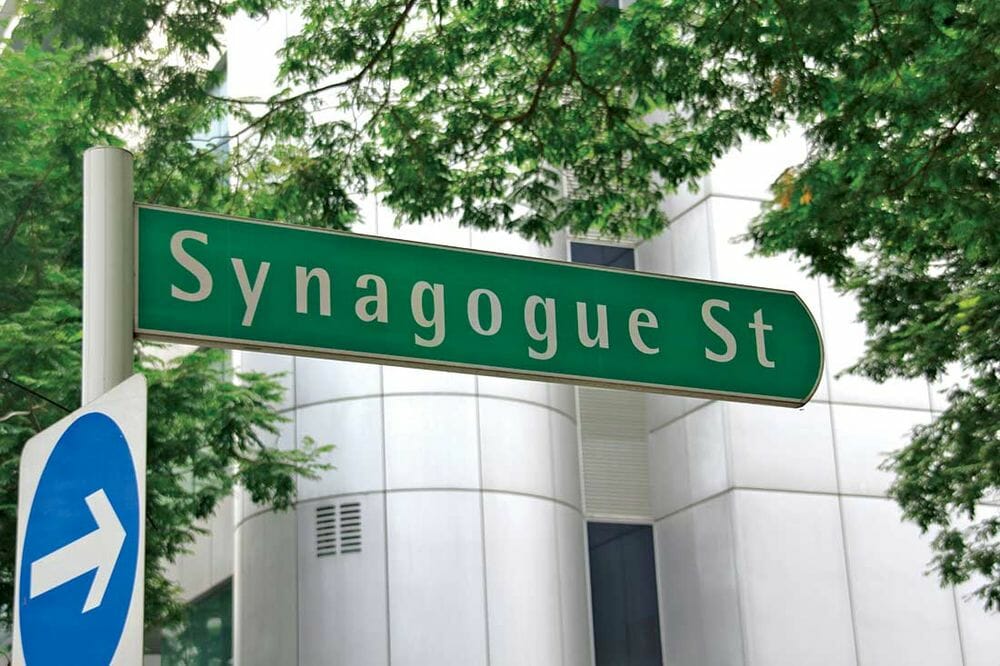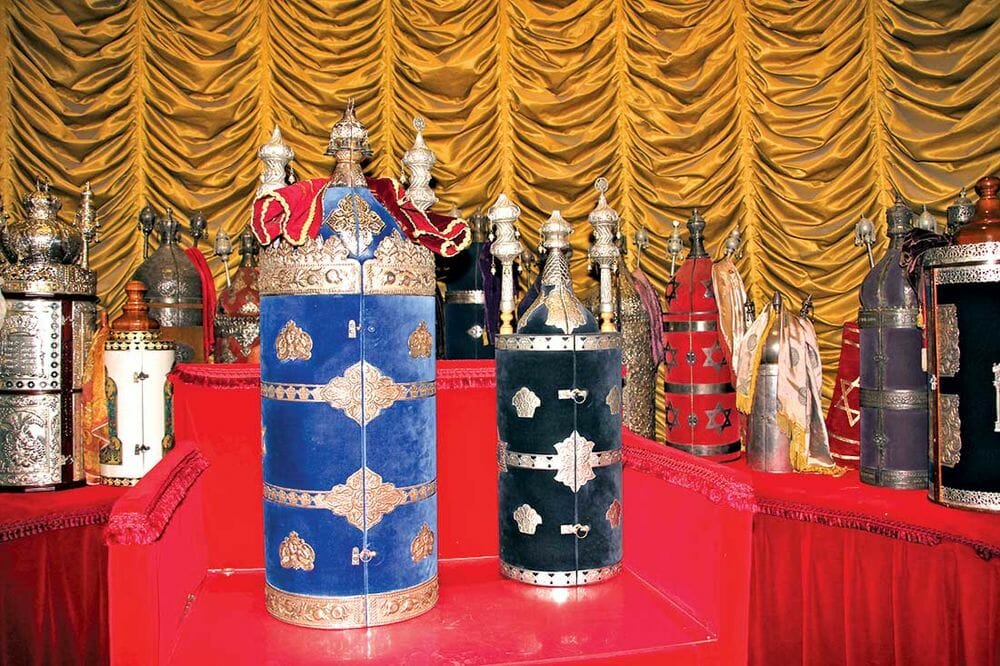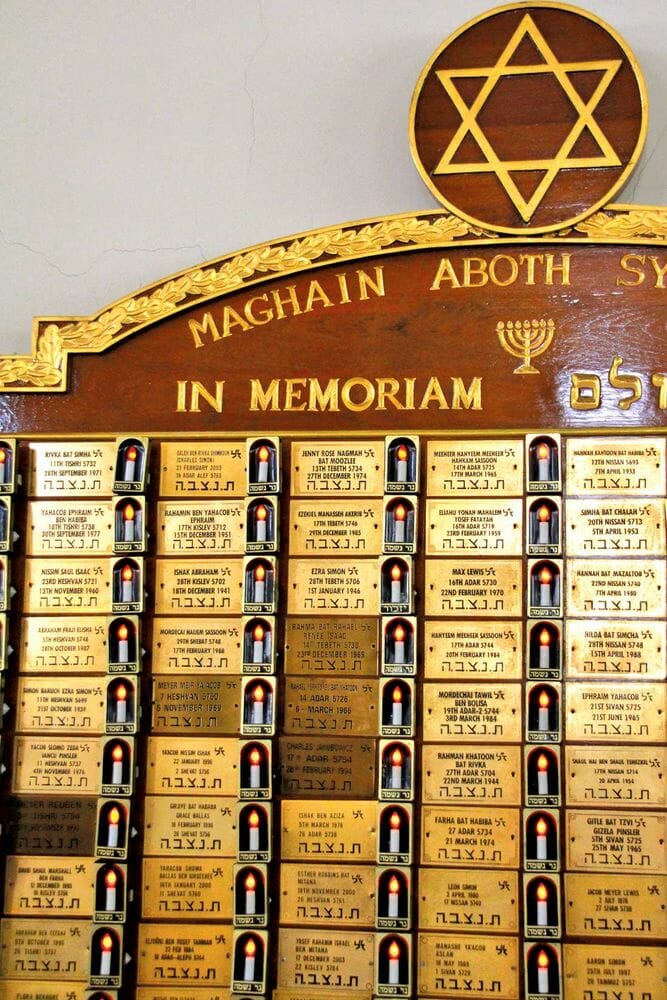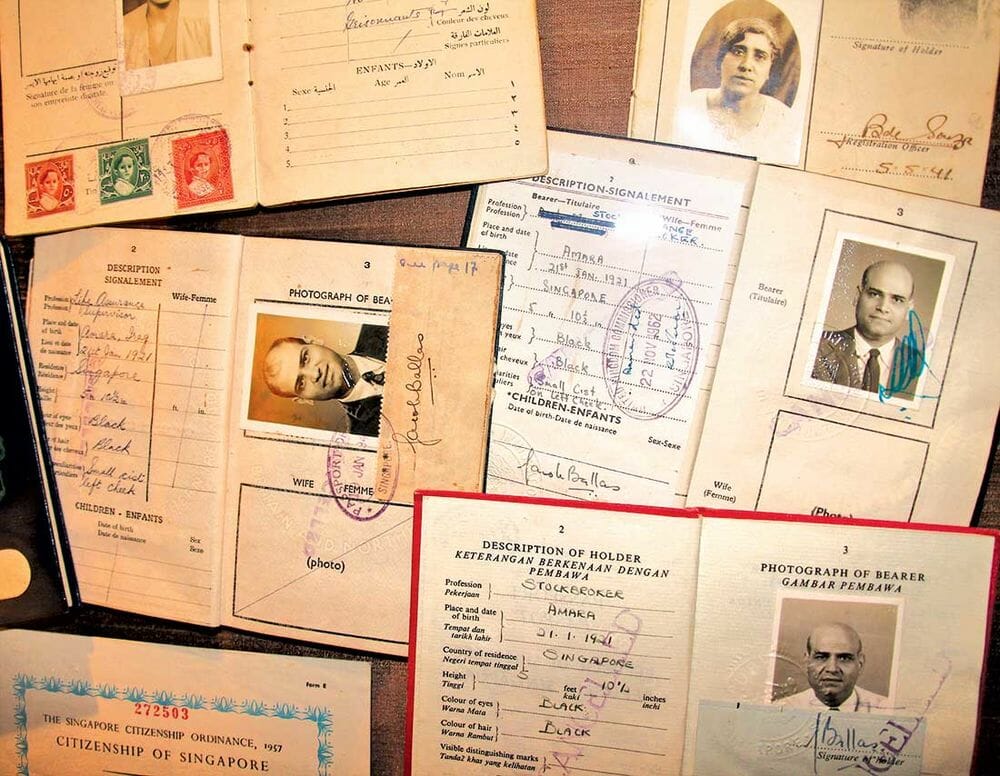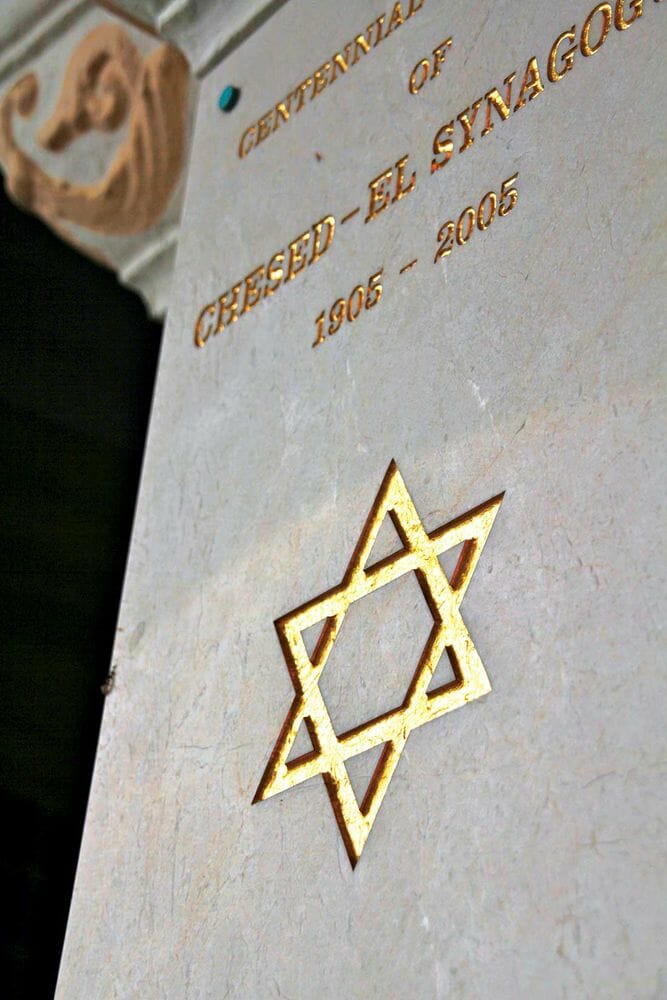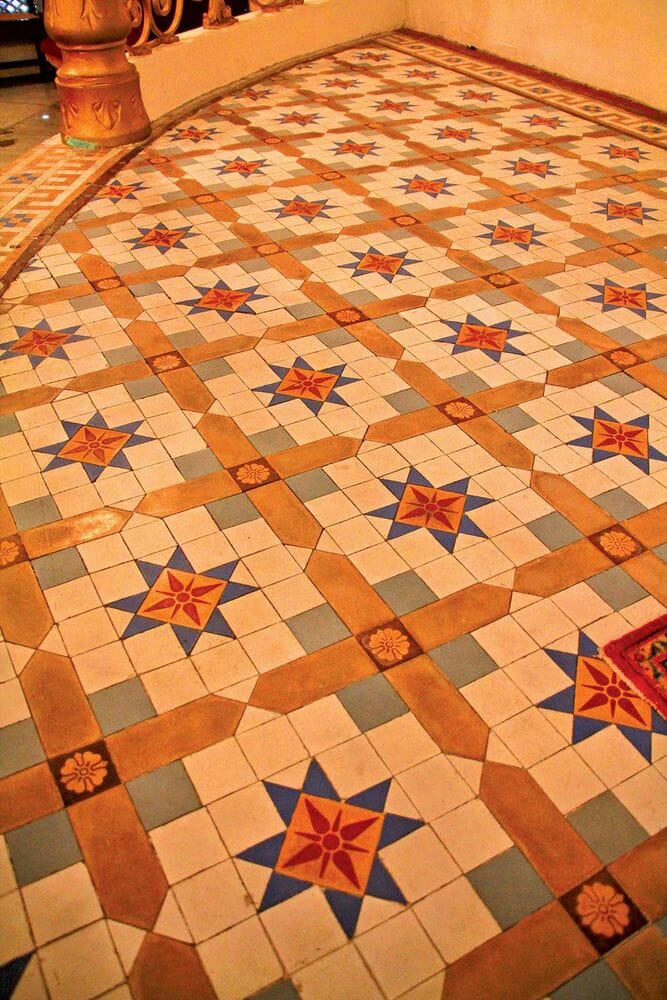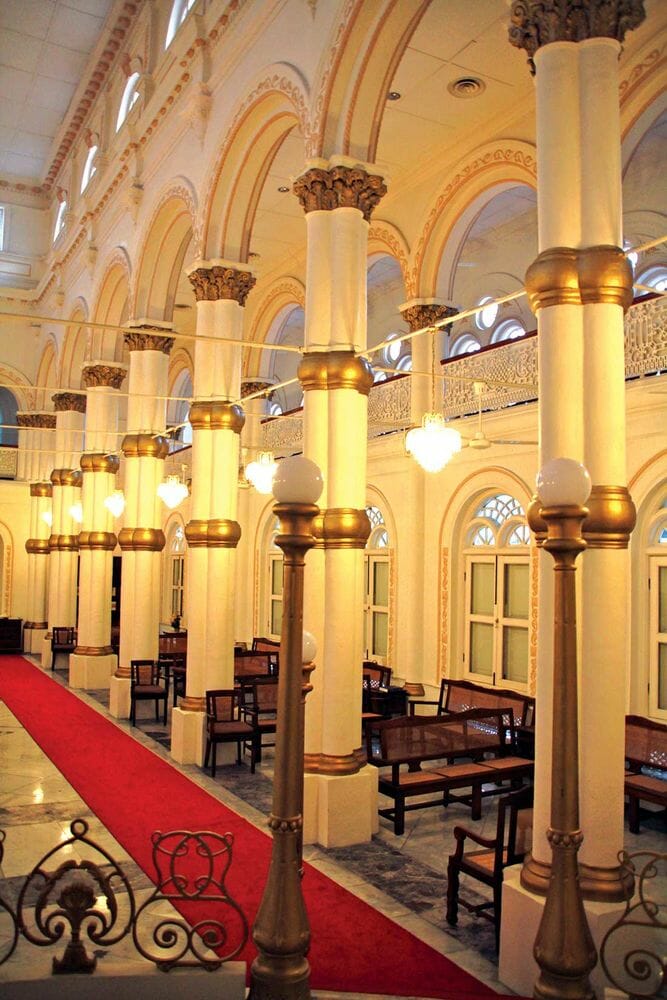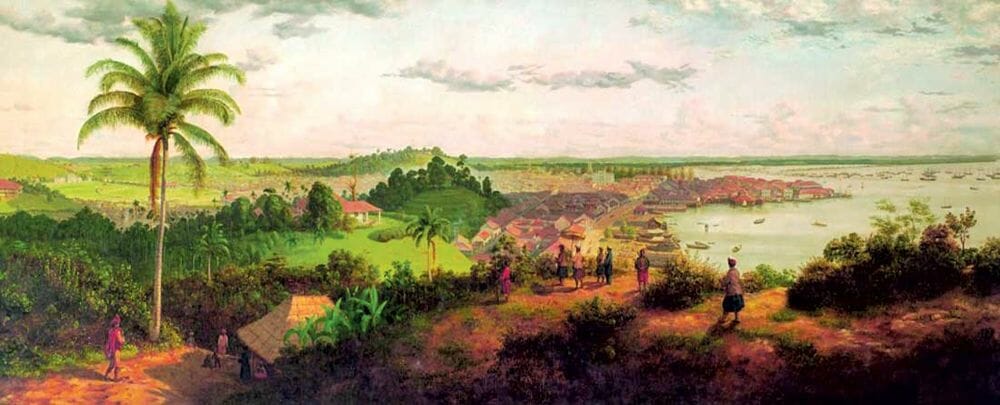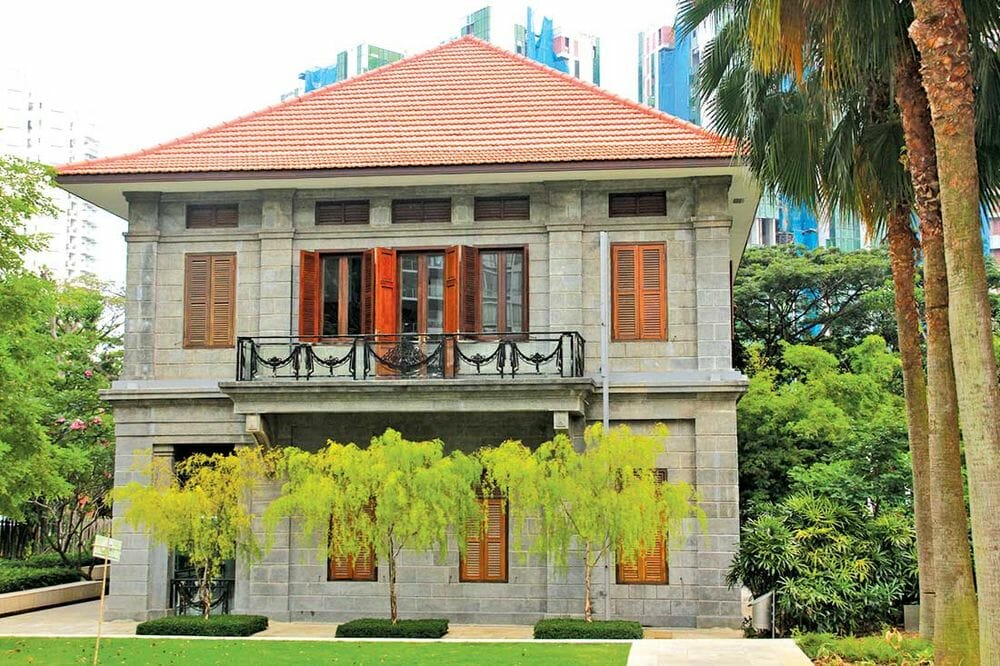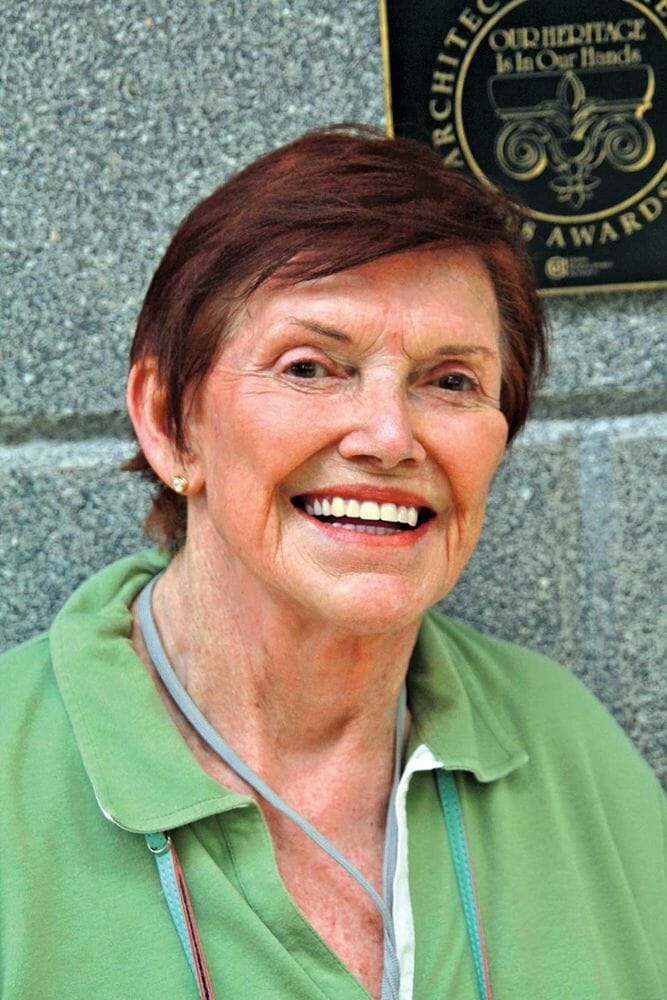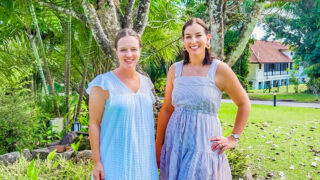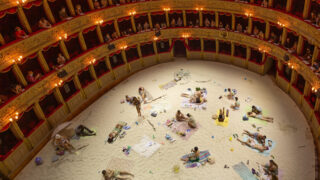Doyenne of local guides for the past 50 years, 75-year-old Geraldene Lowe is almost ready to retire her walking shoes. So, this discovery of Singapore’s Jewish heritage may be the last of our articles in this series. On behalf of many thousands of fans, therefore, we thank her for opening our eyes to the multi-faceted culture and history of the Lion City.
As we settle ourselves in the bus, Geraldene tells us that she gleaned some of her anecdotes from “the many stories that old Uncle Ike Elias used to recount during the famous Sunday curry tiffins that he gave at his seaside bungalow, where The Seaview condo now stands”. According to Uncle Ike, Raffles himself was of Jewish stock, his name coming from “Raphael”.
Uncle Ike’s speculation extended to the Irish architect, George Coleman, whose magnificent Palladian-style buildings came to define Singapore’s colonial architecture: his mother’s name was Drumgold (a Jewish name), and a Rabbi Coleman currently heads up the Hebrew congregation in Perth, Western Australia. Who can argue with that logic?
History
There were already a handful of Jewish Baghdadi traders in Singapore when Raffles first set foot here in 1819, Geraldene tells us. In 1830, a census of traders recorded “nine merchants of the Jewish faith”. They made their fortunes at first from the opium trade, and later mainly in stocks and properties, tin, rubber and textiles.
Sephardic Jews, originally from Mesopotamia (modern-day Iraq), they are distinguished from the Ashkenazi Jews who arrived here more recently and have their origins in Europe.
By 1939, there were more than 1,500 Jewish inhabitants; many were interned by the Japanese during the Occupation. After WWII, quite a number emigrated to Australia, Israel and other countries, leaving a reduced community of about 450. Today, an estimated 300 Sephardic Jews and another 700 or so Ashkenazi Jewish expats and other foreign workers keep the synagogues active.
As we swing out of the Dempsey coach park and pass the Botanic Gardens, Geraldene mentions that three of the Gardens’ collection of sculptures – Girl on a Swing, Girl on a Bicycle and Lady on a Hammock – were commissioned from British sculptor Sydney Harpley and donated by the late David Marshall. He, of course, was Singapore’s first Chief Minister, later Ambassador to France, Spain and Portugal, and one of the country’s most famous Jews. It looks like rain; otherwise, we might have stopped off to admire them.
And here’s another gift to Singapore from another eminent Jew: the Jacob Ballas Children’s Garden, left as a bequest to the Botanic Gardens in the will of Jacob Ballas (1921-2000). There’s a charming rule: you’re not allowed into the garden unless accompanied by a child.
Jacob was the son of poor Orthodox Iraqi Jews who moved here in the late 1920s and rented a terrace house at 19 Wilkie Road. His mother made ends meet by baking unleavened Arabic roti bread, which the young Jacob then sold in the neighbourhood. As a student at St Andrew’s, Geraldene says, he also sold noodles to his classmates for ten cents a bowl.
That early mental arithmetic paid off, because – after a full and chequered career that included selling cars and life insurance, and surviving the brutal Japanese Occupation – he became a stockbroker and eventually chairman of the Malaysia and Singapore Stock Exchange. A great philanthropist, he financed the building of the Jewish community centre next to Maghain Aboth Synagogue; the Centre was opened in 2007 and bears his name.
Travelling down Nassim Road, we pass the British High Commissioner’s residence, Eden Hall. It was built in 1904 by Ezekiel Manesseh – “Everyone called him Uncle Eze”, says Geraldene. At first, he rented it to a Scottish widow, Mrs Campbell, who managed it as a boarding house; but in 1916, after his marriage to English widow Elsie Trilby Bath, they moved in with her two children, Molly and Vivian.
The Goodwood Park Hotel was built in 1900 to be the Teutonia Club; but after WWI, Ezekiel bought it and turned it into a boarding house. During the WWII Japanese Occupation, it became the headquarters of the Kempeitai. And after the war, he sold it to a Chinese banker who turned it into the hotel it is today.
The Jewish Quarter
Entering Prinsep Street, we’re firmly in the old Jewish quarter. The Prinseps were Englishmen of Jewish origin, and long-time financiers of the British East India Company. They entrusted the management of their 1,000-hectare nutmeg plantation here to the German Behn, Meyer & Co. outfit, while the family lived in the house on the hill. In 1876, when the Prinseps packed up to return to England, the government bought the property from them and started to build Government House. Now called the Istana, it’s the official residence of the President of Singapore.
Where Dhoby Ghaut MRT station is now, the first Jewish cemetery, The Orchard Road Cemetery, was established around 1840 on land acquired on a 99-year leasehold by the Jewish community. Geraldene used to live opposite it in MacDonald House, she tells us, above one of the car showrooms that used to be in this part of Orchard Road. “From my flat, you could see over the wall into the cemetery; otherwise, you wouldn’t have known it was there.”
Another cemetery for the Jewish community was established at the junction of Thomson and Newton roads, and was used from 1904 to 1973. “Then, when the space was needed, the government paid for a rabbi to come from Israel to exhume the graves in both cemeteries, and gave the community a plot out at Jurong where most of the other cemeteries are.”
David Marshall
Perhaps Singapore’s most famous Jew, the eloquent and charismatic lawyer and politician David Saul Marshall (1908-1995) served from 1955 to 1956 as Singapore’s first Chief Minister, after his left wing Labour Front narrowly won the first Legislative Assembly Elections. Later, he founded the Worker’s Party of Singapore. Despite differences with Lee Kuan Yew’s government, he served as ambassador to France, Portugal, Spain and Switzerland during the period 1978 to 1993.
On the bus, Geraldene tells the group her favourite David Marshall anecdotes. While studying law in London, Marshall made ends meet by teaching French and chess, she says. Later, in his Singapore legal practice, he went by the slogan “Marshall never loses” and successfully defended 99 out of a hundred people charged with murder.
This, the ability of one extremely eloquent man to so effectively sway a group of ordinary citizens, was the reason for Lee Kuan Yew’s abolishing the jury system here. Nowadays, you’ll be judged by three High Court judges.
As it happens, today’s tour group includes Dr Jonathan Marshall (son of the famous David Marshall). Jonathan spent his first nine years in Singapore before going off to school in England while his father was based in France as Singapore Ambassador. He came back to do his military service, went on to study psychology at Stanford and Harvard, and returned to Singapore nine years ago, partly because his mother, Jean Marshall, now 87, is here.
Most fittingly for the son of Lee Kuan Yew’s old rival, he is now a psychologist and professor teaching leadership at the Lee Kuan Yew School of Public Policy at NUS. “It’s sort of nice,” agrees Jonathan. “I’m sure my dad would thoroughly approve!” Jonathan has recently set up Marshall Consulting, his own leadership consultancy business (marshallconsulting.com.sg).
Geraldene reminisces about her own childhood during the war years. Though she lost her father during the war, her mother managed to get the two of them out by cargo ship on the very eve of the Fall of Singapore. When they returned after the war, they didn’t have much money and her mother had to work. They found accommodation in Amber Mansions: built in the 1920s by Jewish businessman Joseph Elias, it was one of Singapore’s first elite shopping centres. The shops downstairs included Lee Kuan Yew’s famous Jewish tailor, she recalls. Like the cemetery, Amber Mansions was demolished in 1984 to make way for Dhoby Ghaut MRT station. Amber was Elias’s family name, and yes – there’s an Amber Road in East Coast, too.
A couple of people call out as they spot a decorative Star of David in bas relief, so we stop for a photograph: it’s the three-storey neoclassical Gill David Elias Building, built circa 1928, on the corner of Short Street and Middle Road.
Winding up Mount Sophia, we turn into Adis Road, where we find the still-imposing, white-painted house that used to be Adis Lodge – built in 1907, it was legendary for its magnificence and for the hospitality of its owner, the Jewish lawyer-turned-stockbroker Nissim N. Adis, famous also for his addiction to spiffy motor cars. Adis eventually sold the house to millionaire philanthropist Eu Tong Seng in 1912, and it is now a Montessori preschool.
Adis also owned the Grand Hotel de l’Europe, which overlooked the Padang and stood where the Supreme Court stands now. Somerset Maugham is reported to have said: “You may stay at the Raffles, but dine at the Grand!”
On the way to the synagogue, we pass The Abdullah Shooker Jewish Welfare Home at 24 Waterloo Street, which houses a number of elderly Jewish residents in great privacy and comfort.
Another prominent Star of David can be seen on Selegie Road’s Ellison Building, believed to have been built in 1924 for a Jewish woman named Ellison. As it was the tallest building of the day, we’re told, it served as a great vantage point for watching Sunday races at the old racecourse nearby.
The Calcutta-born Venetian Jew, Isaac Belilios (1846-1910), for many years dominated the cattle trade in nearby Little India. Other activities included wheat-grinding, sesame-oil pressing and pineapple canning, and while the husks went to feed the cattle, their manure in turn fertilised the pineapple plantations. His name lives on in Belilios Lane, Belilios Terrace and Belilios Road – originally the private road to his house.
The Synagogues
Having crossed over the river into the banking district, we come to Synagogue Street. Here’s where Singapore’s first synagogue – in the form of a shophouse – was erected in the 1840s. It served its intended purpose for 30 years, before being sold as a residential shophouse and then demolished after the Japanese Occupation.
The handsome Maghain Aboth Synagogue in Waterloo Street, part of the colonial area, was consecrated in 1878. As Singapore’s chief synagogue, it holds daily services. Security is pretty tight. The gate guard requests us not to take photographs, and apparently you’re asked to leave your ID at the gate if you visit independently.
An honour roll of Jewish Welfare Board presidents is displayed at the entrance: at the top is D.S. Marshall, 1949-1952; at the foot is Victor Sassoon.Originally single-storeyed, an upper level was later added to accommodate the women of the congregation. Luckily for us, a friendly member of the Jewish community happens to be in the synagogue, and offers to open the altar so we can see its precious collection of torahs.
To the left of the main building is the seven-storey Jacob Ballas Community centre, mentioned earlier in this article. Most interesting is a display of passports, especially that of Jacob’s mother: S. J. Ballas, undetermined nationality, registered on 5 May 1941, passport number “Nil”, occupation “housewife”, address 19 Wilkie Road.
Described as “the hub of Jewish life in Singapore”, the Centre houses the rabbi and his family, a mikvah (ritual bath) for women, and more.There’s a school here, too, where both boys and girls study on Sundays.
Did you Know?
Jewish visitors can visit the Awalfi Restaurant at the Jacob Ballas Centre for kosher versions of Asian delights such as char kway teow and mee goreng, Chinese fare such as chilli Szechuan chicken, as well as Western, Indian and Middle Eastern dishes.
And the Coffee Bean & Tea Leaf at the corner of Waterloo Street and Bras Basah is completely kosher. The reason for that? Brothers Victor and Sunny Sassoon brought the franchise to Asia in 1996, and two years later bought the entire company from its Californian founders.
Why a second synagogue? In fact, Chesed-El Synagogue on Oxley Rise was privately built in 1905 by the eminent and very wealthy British Jew, Sir Manasseh Meyer (1843-1930). He came to Singapore in 1861 and was knighted in 1920 for his services towards the cultural upliftment of the Jewish community here.
His family home was Belle Vue, a big house further up the hill from the synagogue. Originally named Killiney House, it was built in 1842 by the architect Coleman for the surgeon-general, Dr Thomas Oxley, who owned the surrounding nutmeg plantation.
Belle Vue was demolished to make way for the eponymous condo I lived in when we first came to Singapore, and – as is the way in Singapore – that’s been flattened, too, for a new Belle Vue that offers smaller apartments at higher rentals.
Hills and Swamps
You wouldn’t think so today, but Singapore used to be a hilly island. From Raffles’ time, however, most of its hills have been used to fill in swamps; an entire hill was bulldozed to fill in Raffles Place, for example. Fort Canning Hill (previously Bukit Larang, then Government Hill) remained largely intact, but it used to be loftier than it is now.
As we pass through Chinatown, Geraldene explains how the original seven hills of Chinatown – or the “one and a half hills” that are now left – reflect Jewish influence. Pearl’s Hill, originally called Mount Stamford (after Stamford Raffles) was named for Lieutenant James Pearl, the English-Jewish owner and captain of the ship that first brought Raffles to Singapore in 1819. He bought over the Chinese-owned spice plantations that were already on it; but by 1824 he sold the hill back to the colonial government and retired on the proceeds.
Mount Wallich, named for Nathaniel Wallich (1786-1884) – and there is a street of the same name near Tanjong Pagar MRT station – was a Danish-Jewish surgeon who worked in the Danish settlement near Calcutta. A leading botanist of his time, he was also superintendent of the East India Company’s botanical garden there, and many years later – at the request of his old friend Raffles – he came to Singapore to design the first botanical gardens, around his house on Fort Canning Hill.
Palmer Road is named after John Palmer. Part of a family of Jewish Calcutta merchants, he has been called the father of the Indian mercantile community in Singapore. During the 1820s, he owned Mount Palmer, which was subsequently levelled. Geraldene says it was his overly generous nature – anyone could touch him for a loan – that led him into bankruptcy in 1827.
Solomon Street in the Boat Quay area was named after Abraham Solomon, a large and imposing merchant from Baghdad who came to live here permanently in 1842.
Eastern Breezes
Heading up the East Coast, on the corner of Meyer and Fort Roads, Geraldene points out what used to be the Ezekiel family house. Wealthy Asian families have always preferred to live near the seaside, so as to catch the breezes, and this has long been a popular area featuring big villas. Before the Merdeka Bridge was built in 1935, however, the best way to get from town to Katong was by ferry.
As we stop at The Seaview condominium in Amber Road, she reminisces about what used to be here: the lovely old Sea View Hotel, built in the early 1900s, right on the beach and with a retaining wall against which the waves used to lap. Its splendid ballroom had a round dance floor, she remembers, with a romantic domed roof. Owner Reuben Manasseh Meyer, who also owned the equally renowned Adelphi Hotel nearby, leased it first to Eleazar Johannes and later to the Armenian Sarkies brothers, of Raffles Hotel fame.
“Nearby was the big family home of the rich Eliases. Before the war,” she adds, “I stayed down the road from here in the Crescent Flats, which were also built by the Elias family. The Eliases, the Meyers and the Ambers all married one another; you’ll see their names in those of the streets and roads and these were their stomping grounds”.
Beyond the expansive swimming pools of The Seaview condo still stands a lovely old house that used to be in the grounds of the Elias family house. It was the home of the family accountant, a lawyer called Joe Grimberg, who grew up in this house, says Geraldene. Sympathetically restored, it is now the clubhouse for the condominium.
Testament to the Government’s racial tolerance and integration programmes is that anti-Semitism is unknown in Singapore. And with so many physical reminders of the historical and ongoing Jewish contribution here, long may that be the case.
Some Sources:
Geraldene Lowe
Eze Nathan’s The History of Jews in Singapore 1830-1945
Wikipedia
infopedia.nl.sg
remembersingaporewordpress.com
singaporejews.com

